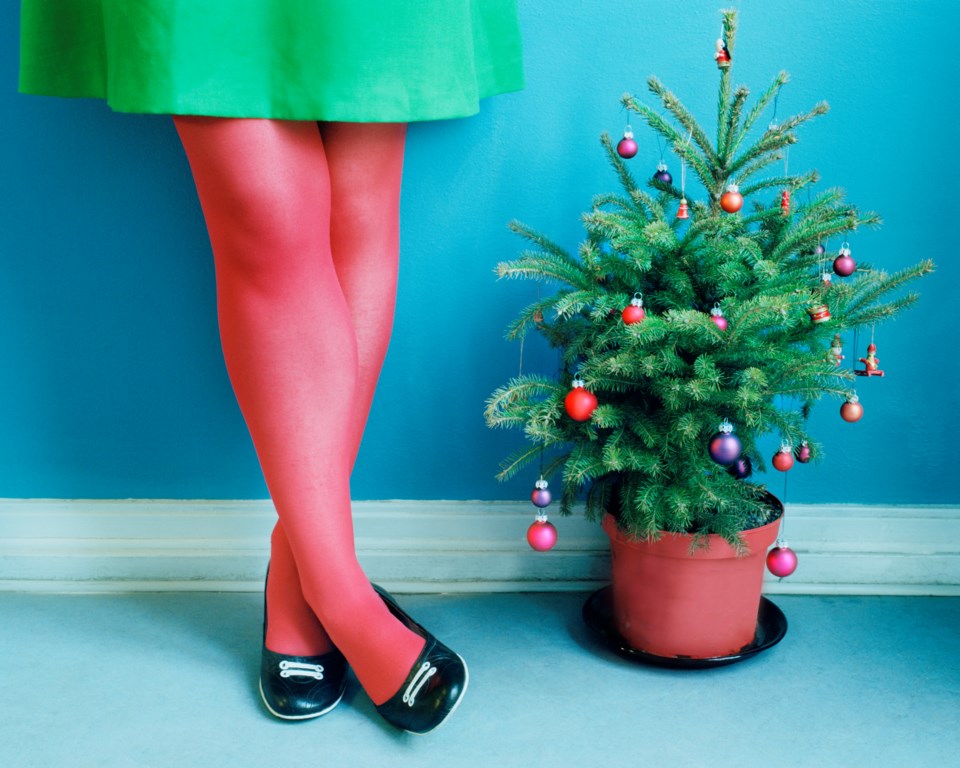The following column was submitted to the Tri-City News from Brian Minter — master gardener, best-selling author, Order of Canada recipient and co-owner of Minter Country Garden Store.
There are still many folks who love to have a potted, living Christmas tree each year – one that they can plant out in their garden to enjoy for many years to come.
Potted, living trees are, perhaps, the most environmentally friendly way of enjoying a Christmas tree indoors.
However, as great as it sounds, and it can be, there are some important details to consider that will make all the difference.
First, the smaller the tree the better.
A four-, five- or six-foot tree, grown in a pot, is the ideal candidate for keeping indoors, unlike field dug trees that have had their roots cut back or otherwise distressed.
Pot-grown living trees are much easier to keep indoors where conditions are often very dry and usually not nearly humid enough.
But they can be kept indoors for only a short time – ten days to two weeks – after which they must be planted outdoors in the ground or kept in a container on a deck.
Just like a cut tree, potted Christmas trees need water. The soil should be kept moist and if possible, its branches should be lightly misted; this will help keep the moisture content in their branches much higher.
If you can keep your home just a little cooler, your living tree will be much happier. Be sure your potted tree is located away from heat vents, radiators and fireplaces, and preferably near a window.
The tree best suited as a potted indoor living Christmas tree is the Norway spruce. It’s the most common European Christmas tree, both as a cut tree and as a potted indoor tree.
It has lots of thin, rich dark green branches. Outdoors, it makes a great garden tree that will grow about 30 feet tall, but it can be pruned to keep it much smaller.
Omorika spruce grows to a similar height, but it has a narrower form, and its branches have a bluish tinge. Its cousin, Picea omorika Bruns, is one of the narrowest spruces, and again, it has a nice bluish tone. Both make great landscape specimen trees when planted in the garden. A blue spruce is always nice, but I find them quite prickly as a Christmas tree.
A few growers are producing Fraser and Nordmann trees that also make beautiful specimen trees, but they do grow quite large for the size of a traditional lot.
Some large trees are still being dug and sold as living Christmas trees, but after their roots have been cut and the trees are put into pots, their chances for survival indoors are far less. As a living tree planted outdoors, however, they may be fine, especially if they have a burlap sack tied around their roots to hold the roots together. If the weather is reasonably mild, outside living trees can go inside but only within their heat tolerance time frame.
If it’s quite cold after New Year’s, be sure to acclimatize your tree for a week or so in a protected area to harden it off. If it’s mild and rainy outside, get them planted, or at least out in the weather as soon as you can. Remember, once it gets used to outside conditions, it can make a nice deck tree as well.
Many folks enjoy reconnecting each holiday season with the many earlier Christmas trees that they have enjoyed over the years and that are now planted in their yards. Living, potted Christmas trees are a wonderful way of creating holiday memories, and they are great for the environment.





